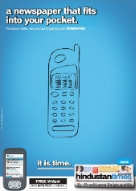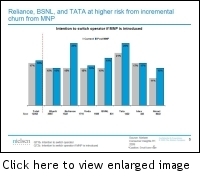India-based software game development company, Spiel Studios is developing a game for Apple’s mobile handsets, the iPhone. Called The Sealink, based on India’s iconic engineering marvel, the Mumbai Bandra-Worli Sealink.
The Sealink will be a 3D racing game on the iPhone, where the player will be able to drive his favourite car on the Mumbai Sea-link. The game has been built in-house with collaboration from Spiel’s Indian and International team members.
Considering that there aren’t many iPhone users in India, it could prove a difficult foray for any company focussing on India-centric games. However, Mohit Sureka, founder and chief executive officer of Spiel Studios states that this game has been specially designed for not only India but also for every Indian across the globe. Sureka informs that there are around 640,000 Indians globally who use the iPhone.
According to a Nasscom report, the market for gaming development in India is expected to witness a compounded annual growth rate of 78 per cent and reach $300 million (about Rs 1800 crore) this year. Key services currently outsourced in gaming include production and testing activities. Interestingly, the report further reveals that in animation and as well as in gaming, a number of Indian companies are changing their business model and are moving from an outsourcing to a co-production model.
Commenting on the overall gaming perspective, Sureka said, “The industry is in a nascent stage now but global companies look for skill sets in Indian developers.”
The game will feature several officially licensed models from Indian and International car makers in order to increase their brand presence, visibility and strong hold in the Indian market.
The game is scheduled to release in January 2010 on iPhone and will be distributed through the Apple iTunes store worldwide. It will also be developed for PC, Mac and Sony PSP which will be made available early next year.
Spiel is a game development company with offices in USA, UK and India and has a focus on games for all platforms including mobile, online, PC, handheld and console.
Developer creates iPhone game on Mumbai Sea Link
Sony Ericsson to launch India app store by Q1 2010
Handset manufacturer Sony Ericsson will probably announce its applications store in India by the first quarter of the next year. An App store, usually hosted online or on mobile internet, allows users to download applications providing entertainment, utilities and games etc. Other big companies who have already launched their stores in India include RIM’s (Research in Motion) BlackBerry app world and Nokia’s Ovi. Nokia has been actively promoting Ovi in India whereas BlackBerry is a recent entrant in India.
Speaking to Telecom Yatra, Natasha Dutta, manager, marketing and communications, Sony Ericsson Developer World, said, “We already have free content on our applications Fun and Downloads. However, there is no proper paid channel market.” Dutta stated the company plans to have its app store by the first quarter of 2010. With an aim to provide a platform to the developers of India, Sony Ericsson Developer World (SEDW), a global support programme for software developers and a web portal, has announced the launch of its ‘Get on the Train to Fame’ contest. Through this contest, developers will get an opportunity to feature on the Sony Ericsson application channels – PlayNow and Fun & Downloads that are available to consumers in 70 countries. The best prospective application every week will win a Satio (Idou), a high-end Symbian smartphone by Sony Ericsson. The contest also offers developers a chance to receive 70 per cent of the revenue from the sales of their applications.
The aim of the contest is to encourage developers to submit innovative content for multiple platforms or operating systems such as Java, Symbian, Windows and Android. The best prospective application or game will be announced every week.
Dutta further informs, “The contest has been launched today and closes four weeks from now.” Commenting on the promotion front, she said, “We are promoting it primarily through digital media in the form of social forums, Google groups and extensively in developer communities.”
The categories under which applications and games can be developed for applications are communication, entertainment, education, health & lifestyle, languages, location services, music, productivity, sport, web applications, email, messaging, security, travel and others.
NBA launches web, mobile sites in India
USA’s National Basketball Association (NBA) has announced the launch of its official online and mobile sites for India. The new sites will offer live games, video highlights, select Hindi content, player blogs and original columns from two India-based NBA journalists. The journalists, Ayaz Memon and Sahil Sharma, will contribute columns throughout the NBA season.
The online site, www.nba.com/india, will feature a live game broadcast every Thursday morning in India throughout the season. The NBA season is starting from December 17, 2009 and will go on till April 14, 2010.The mobile site, m.nba.com/India, will provide access to the latest NBA news, scores and standings. The sites are being launched in association with local NBA marketing partners, Hewlett-Packard and Reebok.
The online site will promote weekly live telecasts of NBA games and TV schedules and game matchup information will also be showcased on the site. Fans in India can also access up to 40 games each week. The online site will also feature blogs from NBA stars.
The NBA is working with the Basketball Federation of India (BFI) to help educate basketball enthusiasts on the basics of the game through the website and grass roots events. According to BFI, basketball has more than four million active participants in India. “There is a great appetite for basketball across India and the sites will offer Indian fans the opportunity to learn more about the NBA and basketball in India. Basketball is one of the fastest growing sports in India and this exciting launch will help to continue to grow this great game,” said Harish Sharma, secretary general, BFI, in a statement.
Heidi Ueberroth, president of NBA International, said in the statement, “As the NBA’s fan base in India continues to grow, we are delighted to be working with our local partners to provide this unique digital experience.”
Currently there are 12 NBA websites in India, China, Brazil, Spain, France, Germany, Italy, Japan, Canada, Taiwan, United Kingdom and Hong Kong. The NBA, founded in 1946, is a professional sports league that features 30 teams in the United States and Canada.
MNP Countdown: Combating the churn
There is little doubt that Mobile Number Portability (MNP), to be implemented in the major cities of India by the end of December, is good news for subscribers. According to a recently conducted study by The Nielsen Company to gauge consumer attitudes and behaviour towards mobile operators in India, close to one in five (18 per cent) Indian mobile phone subscribers interviewed said they intended to switch their operator when MNP is introduced.
Take Amit Rishi for instance, who is a senior manager with an MNC. Rishi says that he would change his operator depending on the value added services (VAS) offered by others while keeping in mind factors such as cost, efficiency and service. He says, “At present mobile phone users are unable to shift to another service provider offering better services because they do not want to change their numbers which they have been using for years. But with MNP this issue would be addressed.”However, amidst all celebrations, one wonders whether the mobile operators are actually going to bear the brunt of the entire portability scenario in the country. The operators are already under a lot of pressure owing to the intense tariff war and constant delay in 3G spectrum auction, and the MNP might just make it more acute.
The Government of India has decided to implement MNP from December 31, 2009 in metros and Circle A (Gujarat, Andhra Pradesh, Karnataka, Tamil Nadu, Maharashtra and Goa) areas, and by March 20, 2010 in the rest of the country. As per the regulations laid down by TRAI, the MNP facility shall be available only within a given licensed service area. Also, a subscriber holding a mobile number is eligible to make the request only after three months of the date of activation of his mobile connection. The process should be completed in four days, except in Jammu & Kashmir, Assam and North East licensed areas, where it may take up to 12 days. As the process of Porting starts, subscribers who have applied for change in operator will have no mobile phone connection for 2 hours, specified for the ‘no service period’, to carry out the disconnection and activation of the number.
The Mobile Consumer Insights study was conducted by Nielsen with 12,500 mobile subscribers across 50 locations in India. Among the respondents, one in four Reliance Communications and Tata Indicom subscribers would be keen to change their operator when MNP is introduced, followed by close to one in five (19 per cent) BSNL subscribers. The numbers would vary though, depending on the subscriber base of operators. The current churn rate according to the study is 17 per cent in the industry. Bharti Airtel currently has a churn rate of 15 per cent (numbering about 16 million subscribers ) and, as per the findings of the study, this is not likely to change post MNP. Reliance is at risk of losing 25 per cent of its subscriber base, that is, about 21 million subscribers intend to move to another operator.
In another study conducted in 7 metros with 40,000 respondents by IMRB International, an average 20 per cent of subscribers intended to change their existing operators post MNP commencement. According to the survey, Delhi could see the highest churn at 24 per cent and Bangalore the lowest at 18 per cent. It also says that the propensity to switch is relatively higher among postpaid subscribers where three out of five postpaid subscribers intended to switch compared to one in three prepaid subscribers. Hansal Savla, insights director, IMRB, says that operators will resort to better marketing strategies and improving the quality of service in order to prevent churn among subscribers. He says, “Not only would operators want to use MNP to their advantage by attracting subscribers of competing operators, they would also need to prevent the churn. For example, some leading operators are calling their subscribers, especially high ARPU (average revenue per user) ones, and proactively offering them plans with discounted rates.”
Hansal Savla, insights director, IMRB, says that operators will resort to better marketing strategies and improving the quality of service in order to prevent churn among subscribers. He says, “Not only would operators want to use MNP to their advantage by attracting subscribers of competing operators, they would also need to prevent the churn. For example, some leading operators are calling their subscribers, especially high ARPU (average revenue per user) ones, and proactively offering them plans with discounted rates.”
He adds, “CDMA operators are expected to be hit the hardest, as subscribers have showed interest to switch to GSM connections.” To get a brand consultant perspective on the issue, Telecom Yatra spoke to Santosh Desai, managing director and chief executive officer, Future Brands. Desai was of the view that MNP will change the rules of the game and all telecom operators, who earlier focused on acquisition of subscribers, will now go into a retention mode. He said that once MNP becomes the norm, operators will take out schemes which are long term and which give an incentive to subscribers to stick to their network. He further said that MNP will also lead to “greater service orientation” from operators, who are currently “low in service standards”.
To get a brand consultant perspective on the issue, Telecom Yatra spoke to Santosh Desai, managing director and chief executive officer, Future Brands. Desai was of the view that MNP will change the rules of the game and all telecom operators, who earlier focused on acquisition of subscribers, will now go into a retention mode. He said that once MNP becomes the norm, operators will take out schemes which are long term and which give an incentive to subscribers to stick to their network. He further said that MNP will also lead to “greater service orientation” from operators, who are currently “low in service standards”.
Operators too have different views. Kuldeep Goyal, chairman and managing director, BSNL, says that the churn will be significant only initially and will cease to exist later. He, however, did not comment on how the state owned telco is planning for MNP.
However, a senior spokesperson from a leading operator said that the churn from MNP will not be significant as the quality of services provided by all operators is almost the same. He also says that unless there is a major differentiation in the services, both voice and data, subscribers will not change operators.
Another industry analyst thinks that newer operators and regional players stand to gain from MNP, which gives them an opportunity to cut out a share from the large subscriber base created by the older players. Bharti Airtel, for instance, has over 110 million subscribers and Vodafone has 85 million. Lloyd Mathias, chief marketing officer, Tata Teleservices, says that the MNP churn will come from postpaid subscribers who form only a small percentage of the total. According to him, the prepaid customers are already contributing to a large volume of churn as they keep on moving from one operator to another depending on tariffs. He also says that GSM subscribers will be most likely to shift rather than CDMA as the latter are bound by long term plans and operator- bundled handsets. Speaking on the company’s plans to combat churn, Mathias says, “We are ready for MNP and we already have a team in place.”
Lloyd Mathias, chief marketing officer, Tata Teleservices, says that the MNP churn will come from postpaid subscribers who form only a small percentage of the total. According to him, the prepaid customers are already contributing to a large volume of churn as they keep on moving from one operator to another depending on tariffs. He also says that GSM subscribers will be most likely to shift rather than CDMA as the latter are bound by long term plans and operator- bundled handsets. Speaking on the company’s plans to combat churn, Mathias says, “We are ready for MNP and we already have a team in place.”
The views of the industry experts and operators make it clear that churn will not affect telcos’ revenues in a big way. It will just kick off a more intense competition amongst them. However, it will definitely be promising for subscribers as they would be able to get a better deal with regards to tariffs and plans as well as improved service quality.
Nimbuzz adds Twitter function to new app
Nimbuzz, a Netherlands-based company which provides social media applications for mobile, has launched an application with additional features for Symbian handsets, pop up notifications, and full Twitter functions. Symbian is operating software for mobile phones generally loaded on Nokia handsets.
Using this application, a Nimbuzz user on Symbian can use a Twitter client that includes timelines, direct messaging, searches, trends and profiles.
This application introduces pop-up notification, which notifies users of incoming chats and events. Further additions include kinetic scrolling for fifth edition touch screen phones, new chat screen and contact list layout, chat history, plus a direct link to the NimbuzzOut rate calculator for international calls have also been added.
The service is available as a free download from Symbian App stores, such as Nokia’s Ovi Store, and from the company’s website. The new Nimbuzz for Symbian also offers a centralised Messaging client with features such as VoIP (voice over internet protocol) calls, instant messaging and file-sharing with the popular social networks, plus presence, profiles, location and now Twitter.
Recently Nimbuzz had launched the new version of chat and VoIP applications for BlackBerry smartphones.
Founded in 2006, Nimbuzz was officially launched in May 2008 and is headquartered in the Netherlands, with offices in Argentina and Brazil. Nimbuzz service has free and low cost mobile calls, free instant messaging, social networking and communication features using the internet capabilities of the their mobile device. The company has over 13 million registrations and has a current growth rate of over a million new registrations each month. The company claims that it has an active user base of over 30 per cent and an international user base in 220 countries.
Newspapers turn mobile-friendly
Newspapers, which always seemed disinclined towards adopting new media, are now realising the importance of catering to their readers who are increasing getting their daily dose of news logged on to the internet or on the handy screen of their mobiles. While most newspapers adopted the online medium years ago, they are now turning to the smallest portable screen – the mobile phone.
The Times of India has just launched a mobile ePaper application for Blackberrys, smartphones and PDAs. A user can access The Times of India, The Economic Times and Mumbai Mirror on their GPRS (mobile internet) enabled handsets. The Bennett and Coleman publication had launched an m-paper service a year ago for regular handsets.
 The other leading English daily, Hindustan Times has also launched an m-paper widget in beta version about a month ago. To get the widget, which provides updated information on home screens of high-end phones, readers can send an SMS to a short code and download it.
The other leading English daily, Hindustan Times has also launched an m-paper widget in beta version about a month ago. To get the widget, which provides updated information on home screens of high-end phones, readers can send an SMS to a short code and download it.
Alternatively, there are value added service companies such as providers like ValueFirst, who provide content to operators and they in turn offer it to their customers. Manish Jain, vice-president, business development at ValueFirst says, “Our company provides m-paper on the MMS (multimedia Messaging service) technology. We provide text based services to almost all GSM and CDMA operators and have our own editorial board which decides on the content that goes on the mobile.” The content comprises of Bollywood news, comic strips and news from English newspapers.
Commenting on newspapers on mobile as a service, Mahesh Uppal, telecom analyst and director, Com First India, says, “It is an interesting market and has a good future provided one has affordable data access.
According to a study by mobile intelligence firm Informate, the number of clicks for news based applications is one per cent.
As data access improves, newspapers could see a whole new readership base on the mobile, provided that they are able to meet the information needs of their readers on the go.
Mobile banking can reach the unbanked
Considering that mobiles have become omnipresent in India, mobile banking is logically expected to become a successful medium for banking services. However, at the Mobile and Money India 2009 event held in Mumbai on Wednesday, Rajib Chatterjee, vice-president, ATM, net and mobile Banking, HDFC Bank feels Indian banking has not found a killer application for mobile banking. Chatterjee thought that providing a killer application of mobile banking to the age group of 21 to 40 would definitely give a boost to mobile banking.
He said, “ATM (automated teller machines) users were drawn to net banking and these in turn to the mobile banking. But we have found that only 10 per cent of the customers have been availing it.”
The event was chaired by Robin Roy, associate director at PricewaterhouseCoopers and the topic of the session focused on the opportunities of banks and mobile network operators in mobile.
Mobile banking is availing of banking services on mobile handsets. According to the Reserve Bank of India guidelines, providing the framework for enabling mobile payments services to banking customers would generally involve the collaboration of banks, mobile payments service providers and mobile network operators (MNOs).
In mobile payment systems, the banks provide the basic service framework, and the mobile payments service providers are intermediaries for providing the technology framework for the implementation of the mobile payments services. The mobile network operators provide the telecom infrastructure and connectivity to the customers.
However, mobile banking has not picked up as expected. The shortage of the number of bank accounts is among the few reasons. There are many districts and towns where people do not hold bank.
Diwarkar Goswami, executive manager, Deloitte research said at the event, “Mobile banking is not the pathway to revenues. Providing access to the unbanked people has to be in focus.” But Goswami said that in rural areas IVRS (Interactive Voice Response System) could be worked out as an option for mobile banking.
For mobile operators it could be difficult to provide mobile banking to low ARPU customers. Mohammad Jakirul Islam, business development and strategic initiatives, of the Bangladesh-based operator Citycell said, “How far can the banks reach?” In certain areas mobile banking service needs to step in, Jakirul added. Citycell is the fifth largest operator in Bangladesh and is the only CDMA service provider in the country with a subscriber base of around 20 million.
Jakirul cited an example of a pilot that Citycell has begun in Bangladesh. The company has introduced direct top-up cards for its postpaid customers. The service will enable users holding any bank account to pay their bills through mobile. “We are also in the process of seeking regulatory approval for the prepaid service,” Jakirul stated.
According to the RBI website there are currently 32 banks that have been given approval for mobile banking services in India of which only 21 banks have started providing services.
New app enables video content sharing
mBit Infotech Pvt Ltd, an India-based value added services provider, has launched mBit, a peer-to-peer (P2P) mobile content platform for telecom service providers. The P2P technology for mobile, which is compatible with 3G and 4G handsets, was introduced internationally about two years ago.
Raghavendra Aggarwala, chief executive officer, mBit Infotech, told Telecom Yatra, “mBit is like a hybrid between Limewire and YouTube. Users can share photos, videos, music and text, and they can also download the content onto their mobile phones.”
mBit is being rolled out in the beta version initially and it is expected to be launched commercially in January. The subscription based application will be free of cost for the first six months and users will later be charged at Rs 3 per day with applicable data rates.
Aggarwala also said, “We are under negotiations with many operators. We are also planning to subsidise the data charges. Currently we are targeting about a million users and an investment of $ 1 million (about Rs 5 crore) for mBit.”
Last month, the company had rolled out a mobile social networking platform called JuzFriends, which is based on platforms such as SMS, WAP and the web.
Established in 2007, mBit is a joint venture between Malaysia-based mTouche Technology Ltd and Vassoft.net, a brand owned by Himenviro of Singapore.
MNP Countdown: Who is more likely to change operators
With a subscriber base of about 450 million mobile connections, India is the third largest telecom network in the world and second in terms of wireless connections. India is predominantly a prepaid market and the high-end users fall in the postpaid category. Prepaid connections account for roughly about 85 per cent of the total subscriber base of India while the rest is postpaid.
The postpaid model of cellular service is where the customer is charged for usage in the prior month (hence ‘post’ usage), and hence does not feature any limitations on volume of service used. In contrast, the prepaid model asks customers to add a certain amount to their accounts prior to usage and their maximum usage is limited to the amount that is added to the account.
With TRAI introducing Mobile Number Portability (MNP), there has been speculation over who is likely to shift operators – the prepaid or the postpaid subscriber. While it would be easier for the prepaid customers to change their operator, experts from the industry say that it could be the postpaid users who are likely to take advantage of MNP.
 According to a Nielsen Mobile Consumer Insights study released in July, high spenders and postpaid subscribers and business subscribers are more likely to switch operators post MNP. According to the research firm, postpaid subscribers have almost double the minutes of usage compared to pre-paid subscribers and also use more data services. For this report, 12,500 mobile subscribers were surveyed across 50 cities in India.
According to a Nielsen Mobile Consumer Insights study released in July, high spenders and postpaid subscribers and business subscribers are more likely to switch operators post MNP. According to the research firm, postpaid subscribers have almost double the minutes of usage compared to pre-paid subscribers and also use more data services. For this report, 12,500 mobile subscribers were surveyed across 50 cities in India.
The fine print
The Government of India has decided to implement MNP from December 31, 2009 in metros and Circle A (Gujarat, Andhra Pradesh, Karnataka, Tamil Nadu, Maharashtra and Goa) areas, and by March 20, 2010 in the rest of the country.
Here is how it will work: As per the regulations laid down by TRAI, the MNP facility shall be available only within a given licensed service area. Also, a subscriber holding a mobile number is eligible to make the request only after three months of the date of activation of his mobile connection. If a number is already ported once, the number can be ported again only three months later.
The subscriber who wishes to change his operator should give a written request and pay Porting charges. He can also withdraw his request within 24 hours of its submission to the new operator but the porting charges are not refundable. The new operator must carry out all legal formalities, including identity verification, before processing the porting request. The process should be completed in four days, except in Jammu & Kashmir, Assam and North East licensed areas, where it may take up to 12 days. Based on the recommendations of TRAI, the government had identified two MNP operators – Syniverse Technologies (North and West India) and MNP Interconnection Teleco Solutions (East and South India), for two zones in the country and issued licenses to them.
Just a blip?
Mobile Number Portability may be good news for mobile consumers, but it’s a different story for the operators. There are concerns about what MNP will mean. Telecom Yatra spoke to some analysts about it.
 Kedar Sohoni, president of the Mumbai-based research firm Informate Mobile Intelligence, says “I do not foresee significant subscriber churn in the prepaid segment which accounts for the majority of the subscriber base. In the postpaid segment though, there could be relatively higher churn as they are likely to be the subscribers most keen on retaining their numbers.”
Kedar Sohoni, president of the Mumbai-based research firm Informate Mobile Intelligence, says “I do not foresee significant subscriber churn in the prepaid segment which accounts for the majority of the subscriber base. In the postpaid segment though, there could be relatively higher churn as they are likely to be the subscribers most keen on retaining their numbers.”
He adds that although the churn due to MNP is not likely to be high in percentage terms, the absolute numbers are still likely to be attractive especially for newer operators. “This combination of paranoia and opportunity will hopefully result in improved quality of service,” remarks Sohoni.
Sohoni also thinks that MNP is not going to rock the boat as multi-SIM activity is already happening. Multi-SIM activity means a subscriber having several SIM cards of various operators which allow the user to take advantage of various tariff offers.
 Shankari Panchapakesan, executive director, Telecom Practice, The Nielsen Company, too feels that postpaid subscribers are the ones who would want to take an advantage of MNP. Shankari says network quality is going to be very important from both the operator as well as the customer point of view. Overall though she thinks that MNP will prove to be a mere blip.
Shankari Panchapakesan, executive director, Telecom Practice, The Nielsen Company, too feels that postpaid subscribers are the ones who would want to take an advantage of MNP. Shankari says network quality is going to be very important from both the operator as well as the customer point of view. Overall though she thinks that MNP will prove to be a mere blip.
According to J Gopal, executive director of state-owned operator MTNL, “A customer would want better services and will want his bills or recharges to be as low as possible. So, it could be anyone from a prepaid to a postpaid subscriber who would want to make a shift.”
Vodafone reduces roaming rates to 1.50 paise
Voice tariffs, SMS and now Roaming rates are getting slashed. Soon after Airtel reduced its roaming charges to 60 paise per minute, India’s other big operator, Vodafone Essar, too announced a new roaming tariff of 1.50 paise per second. Roaming charges are levied when a mobile subscriber travels outside the home network to another state or circle and continues using the operator’s service. Roaming charges are applicable to both national and international roaming.
Customers can choose the Travel Plan at a flat rate of 70 paise per minute for national roaming or the Ticket Plan for roaming rates of 1.50 paise per second. This offer is open for both prepaid and postpaid customers.
Prepaid customers can purchase the Travel Plan at Rs 58 and the Ticket Plan at Rs 62, valid for a year from the date of recharge.
Post-paid customers can opt for the Rs 299 Travel Plan or the Rs 299 Ticket Plan to avail these rates. Apart from the 70 paise roaming rate, this Travel Plan offers a flat rate of 50 paise per minute on local and national calls and 175 mins free on calls per month. Similarly, in addition to theroaming rate of 1.50 paise per second, this Ticket Plan offers customers a flat local and STD rate of one paisa per second and 10,000 free seconds per month.




